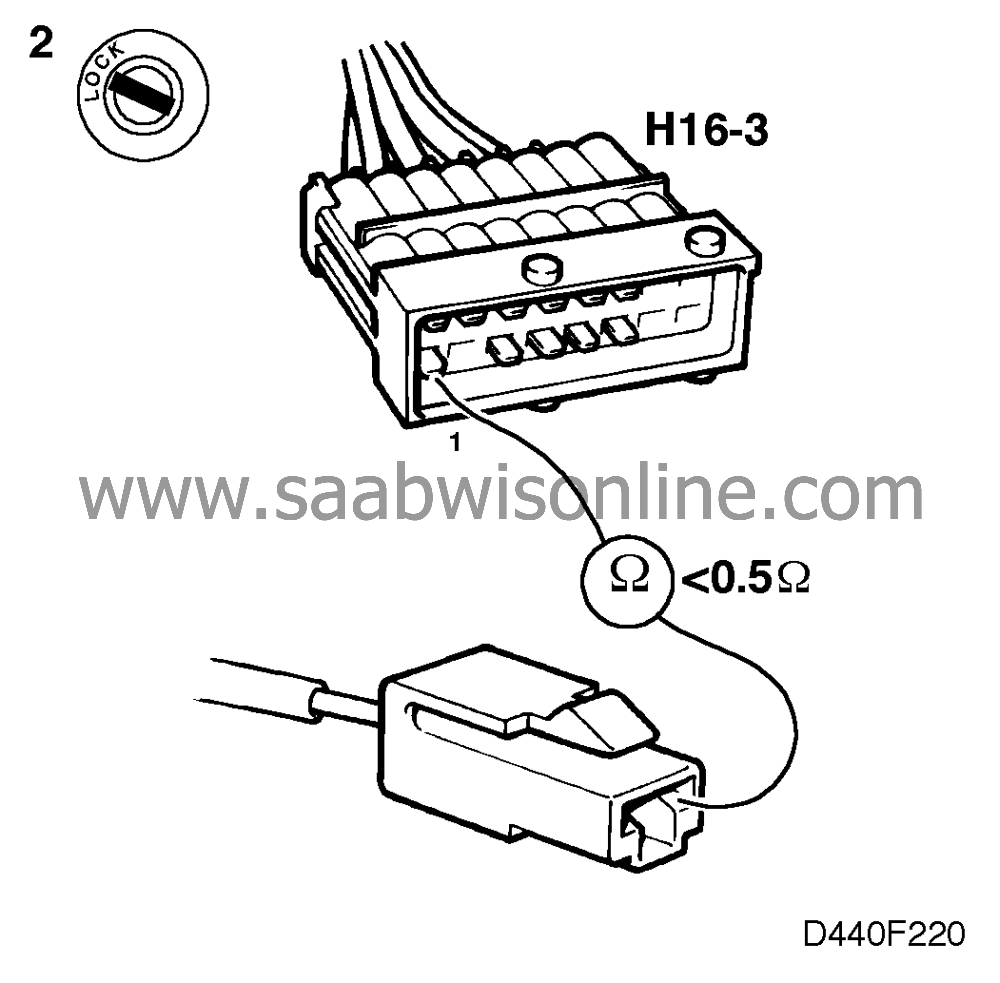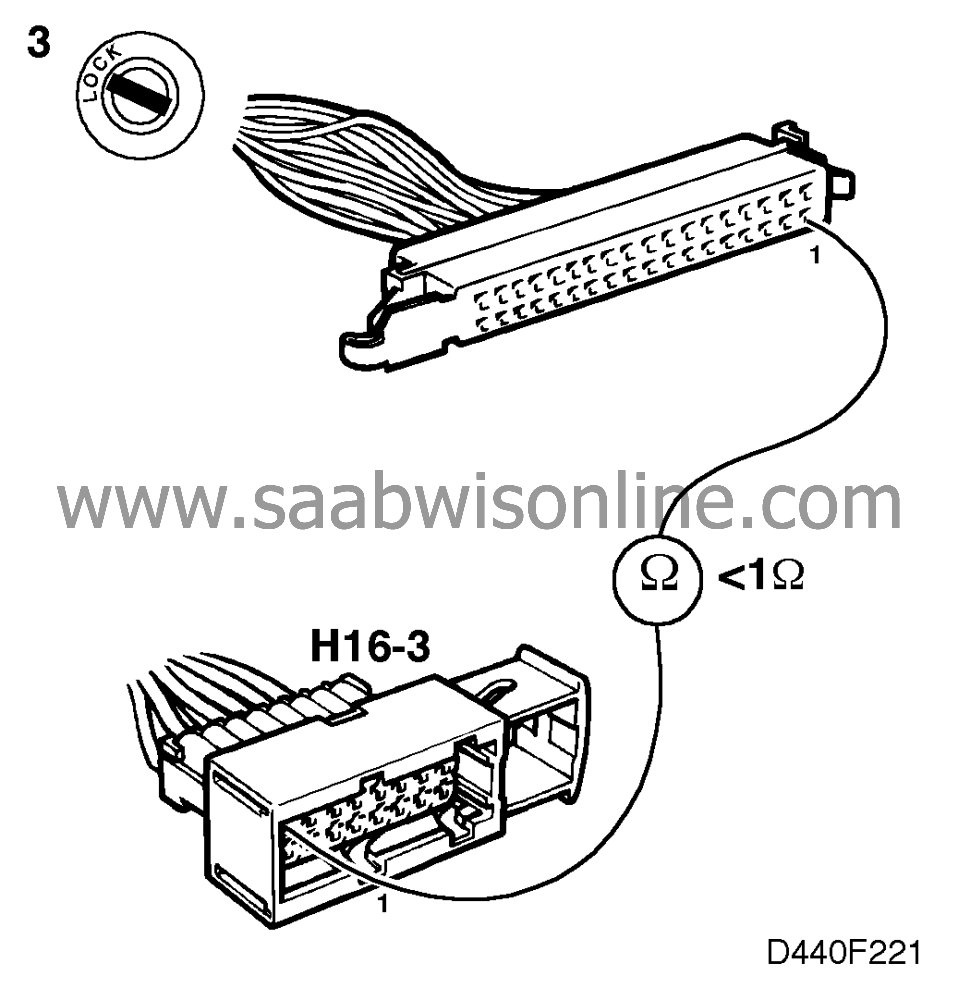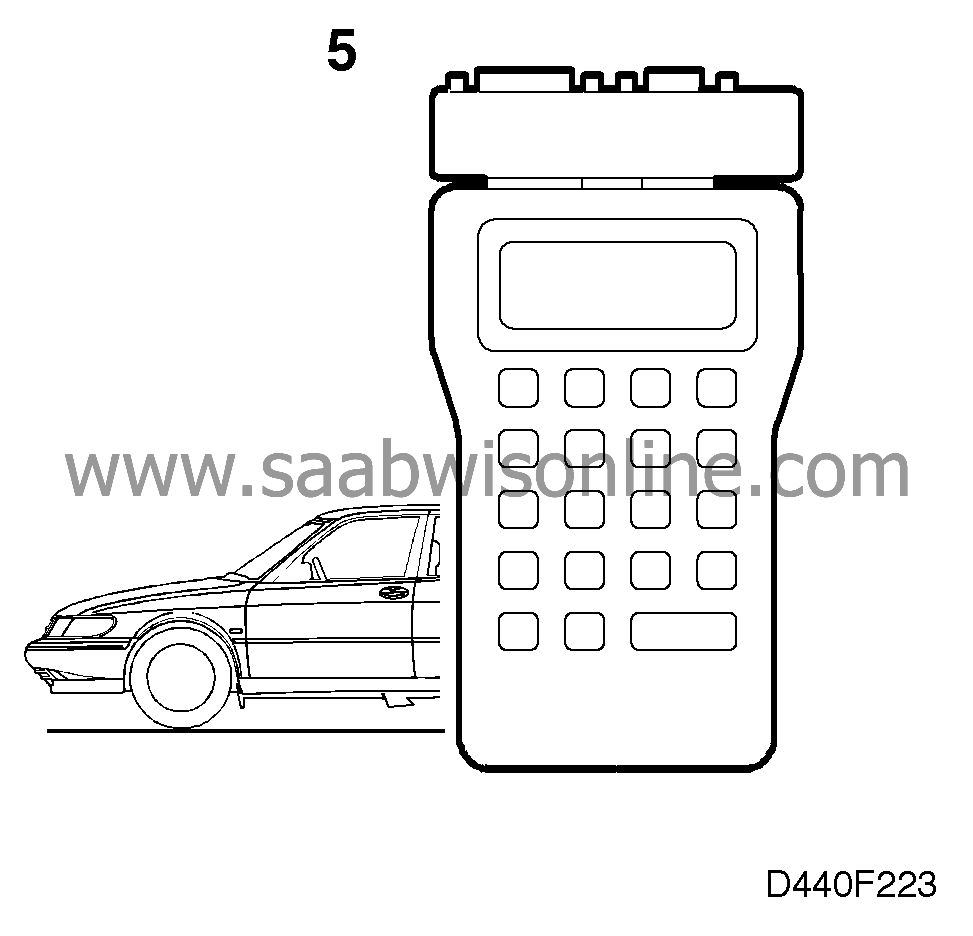P1853
Symptom: CHECK GEARBOX indicator lamp on. The system's emergency operation program has been activated. Gear-shifting is possible between 3rd and 4th gears (open circuit) or the transmission operates in 4th gear only (shorting to battery positive (B+)).
Gear-shifting solenoid valve, SOLENOID 1-2/3-4 (S1), open circuit/shorted to B+.
Fault symptoms
CHECK GEARBOX indicator lamp on. The system's emergency operation program has been activated. Gear-shifting is possible between 3rd and 4th gears (open circuit) or the transmission operates in 4th gear only (shorting to battery positive (B+)).
Conditions
Short circuit to battery positive (B+) or open circuit when the solenoid is not activated. The solenoid is not activated in selector lever positions P, R or N or if the car is driven in 1st or 4th gear with the selector lever in position D or 3.
Diagnostic help
|
•
|
The solenoid S1 can be activated with the diagnostic tool as follows: Select "ACTIVATE". Select "SOLENOID1-2/3-4". The solenoid is activated for 30 seconds at a frequency of 1 Hz. Listen for a click.
|
|
•
|
The solenoid S1 can be activated without the diagnostic tool as follows: Turn the ignition key to ON. Move the selector lever to D. When WINTER is selected, the solenoid will activate and when WINTER is turned off, the solenoid will deactivate. Listen for a click.
|
Diagnostic procedure
1 Check the resistance of the solenoid valve

 Unplug connector H16-3 (16-pin connector located behind the battery). Take a resistance reading across pin 1 of the male connector and a good grounding point on the transmission. The reading obtained should be 10-20 ohms.
Unplug connector H16-3 (16-pin connector located behind the battery). Take a resistance reading across pin 1 of the male connector and a good grounding point on the transmission. The reading obtained should be 10-20 ohms.
Is the resistance correct?
Continue with step 3.
Continue with step 2.
2 Check the resistance of the solenoid valve (contd.)

Remove the valve housing cover and the solenoid lead. Check the resistance of the lead between pin 1 of male connector H16-3 and the solenoid. The resistance should be less than 0.5 ohms.
Is the resistance correct?
Carry out a visual check of the solenoid's electrical connection for moisture and corrosion. If any probable cause of the fault can be seen it should be rectified, otherwise the solenoid should be changed. Then proceed to point 5.
Repair or replace the wiring (including connectors) between connector H16-3 and the solenoid. Then proceed to step 5.
3 Check the wiring connected to the transmission control module

Check the continuity of the lead between pin 1 of connector H16-3 and pin 1 of the transmission control module's connector. Remember to check for slide-out of connector pins and sockets.
Is the wiring OK?
Continue with point 4.
Rectify the fault and continue with point 5.
4 Check the control module's output

|
-
|
Plug in the transmission control module.
|
|
-
|
Connect a test lamp between pin 1 of female connector H16-3 and B-.
|
|
-
|
Connect the diagnostic tool.
|
|
-
|
Turn the ignition to the ON position.
|
|
-
|
Select "SOLENOID 1-2/3-4". The test lamp should flash for 30 seconds.
|
Test lamp flashing?
Check the solenoid and its electrical connection for moisture and corrosion. If there is no probable cause of the fault, the solenoid should be changed. Then continue with point 5.
Continue with point 5.
5 Final check
 Clear the diagnostic trouble code, drive the car on test at varying engine loads and speeds for 5 minutes and obtain readouts of any diagnostic trouble codes that are generated.
Clear the diagnostic trouble code, drive the car on test at varying engine loads and speeds for 5 minutes and obtain readouts of any diagnostic trouble codes that are generated.
Does the diagnostic trouble code recur?
Continue with
 .
.
The remedial action taken was correct.









